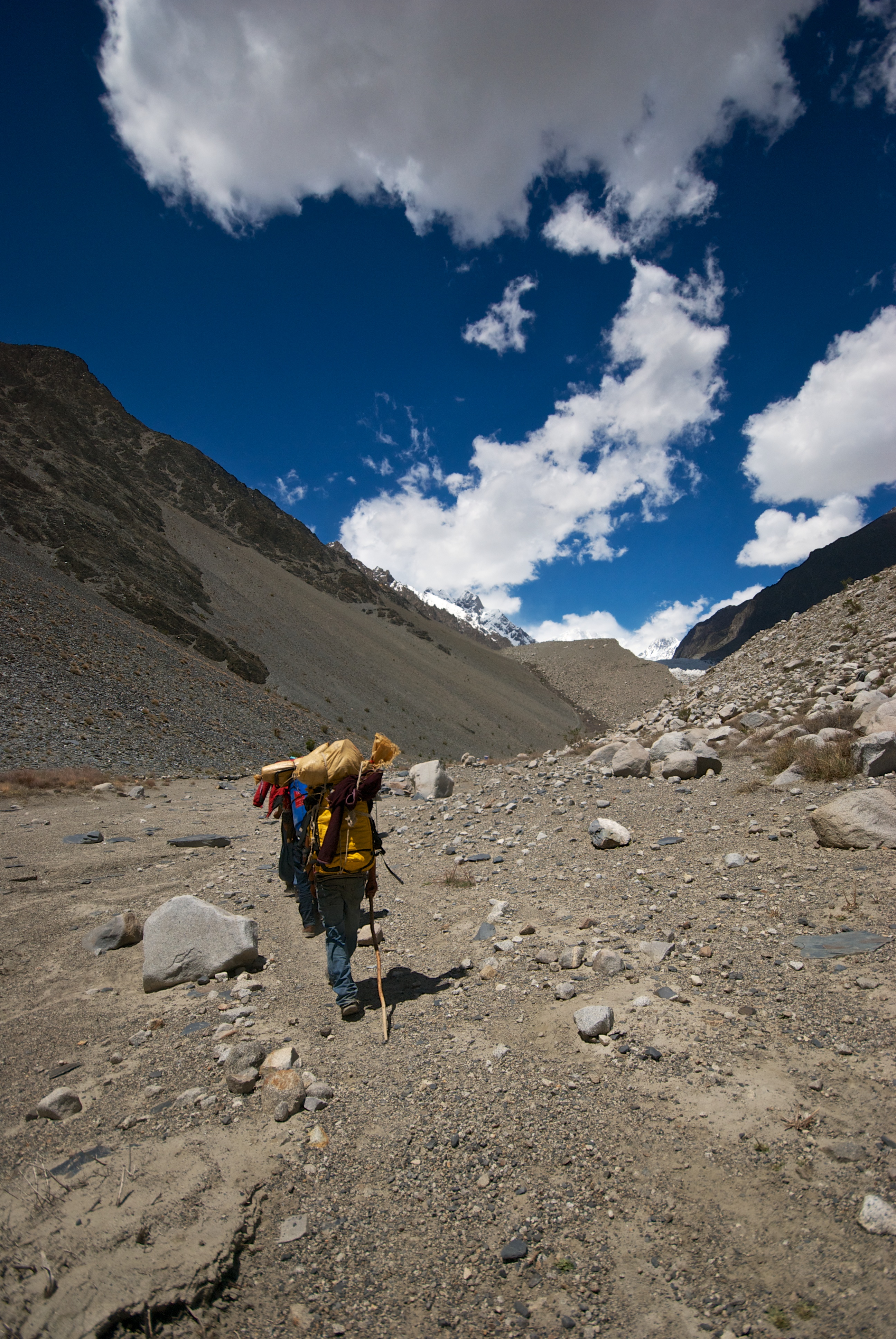
I tibetani hanno un acclimatamento genetico all'alta quota
Geni(i) d’alta quota
Se le popolazioni tibetane non soffrono come noi il mal di quota è merito di una mutazione genetica, apparsa 8000 anni fa e diventata, per selezione naturale, caratteristica tipica del fenotipo delle alte quote. A dimostrarlo è lo studio condotto da Josef Prchal dell’University of Utah, School of Medicine, pubblicato su Nature genetics.
La mutazione interessa in particolare un gene coinvolto nel processo di regolazione delle risposte adattative al cambio di quota, ovvero di pressione. Mentre la quota aumenta infatti, diminuisce la pressione barometrica e quella parziale dell’ossigeno condizioni che, per garantire il mantenimento dei livelli di ossigeno nel sangue, generano una normale risposta fisiologica nell’ “uomo di mare”: un aumento di numero e volume dei globuli rossi e conseguentemente, di emoglobina.
Questa e le altre risposte adattative sono coordinate da fattori di trascrizione, regolati a loro volta da un enzima la cui codifica è a carico proprio del gene mutante. Sebbene la risposta ematica all’aumento di quota sia il meccanismo necessario a garantire il mantenimento dello scambio di ossigeno anche in condizioni di scarsa pressione, un eccesso di densità sanguigna dovuto a un continuo aumento di volume e numero dei globuli rossi può generare policitemia, ovvero un rallentamento del flusso e quindi della distribuzione dell’ossigeno nei tessuti. La mutazione che distingue gli abitanti delle alture, sembrerebbe intervenire proprio nella regolazione di produzione di globuli rossi, prevenendo il rischio di policitemia. La maggior parte dei tibetani infatti, mantiene in quota un volume dei globuli rossi comparabile con quello delle popolazioni che vivono a livello del mare. Vale a dire che in condizioni ambientali critiche per la maggior parte di noi, dove un respiro normale ne vale cinque e il cuore batte a mille, i tibetani trottano senza difficoltà, addestrati da 8000 anni di perfezionamento del gene della montagna. http://oggiscienza.wordpress.com/2014/08/26/genii-dalta-quota/#prettyPhoto
NATURE GENETICS | ARTICLE
A genetic mechanism for Tibetan high-altitude adaptation
- Felipe R Lorenzo, Chad Huff, Mikko Myllymäki, Benjamin Olenchock, Sabina Swierczek, Tsewang Tashi, Victor Gordeuk,
- Tana Wuren, Ge Ri-Li, Donald A McClain, Tahsin M Khan,Parvaiz A Koul, Prasenjit Guchhait, Mohamed E Salama,
- Jinchuan Xing, Gregg L Semenza,Ella Liberzon, Andrew Wilson, Tatum S Simonson, Lynn B Jorde, William G Kaelin Jr,
- Peppi Koivunen & Josef T Prchal
- Nature Genetics (2014) doi:10.1038/ng.3067
- Received 15 November 2013 Accepted 24 July 2014 Published online 17 August 2014
Tibetans do not exhibit increased hemoglobin concentration at high altitude. We describe a high-frequency missense mutation in the EGLN1 gene, which encodes prolyl hydroxylase 2 (PHD2), that contributes to this adaptive response. We show that a variant in EGLN1, c.[12C>G; 380G>C], contributes functionally to the Tibetan high-altitude phenotype. PHD2 triggers the degradation of hypoxia-inducible factors (HIFs), which mediate many physiological responses to hypoxia, including erythropoiesis. The PHD2 p.[Asp4Glu; Cys127Ser] variant exhibits a lower Km value for oxygen, suggesting that it promotes increased HIF degradation under hypoxic conditions. Whereas hypoxia stimulates the proliferation of wild-type erythroid progenitors, the proliferation of progenitors with the c.[12C>G; 380G>C] mutation in EGLN1 is significantly impaired under hypoxic culture conditions. We show that the c.[12C>G; 380G>C] mutation originated ~8,000 years ago on the same haplotype previously associated with adaptation to high altitude. The c.[12C>G; 380G>C] mutation abrogates hypoxia-induced and HIF-mediated augmentation of erythropoiesis, which provides a molecular mechanism for the observed protection of Tibetans from polycythemia at high altitude.
Figure 1: Genome-wide allele frequency differentiation between Tibetans, Mongolians and Europeans.close
To measure genome-wide differentiation in allele frequency between Tibetans and Mongolians, we calculated the PBS for the c.12C>G and c.380G>C variants inEGLN1 for each Affymetrix SNP. We included all unrelated Tibetan, Mongolian and…
Figure 2: The p.[Asp4Glu; Cys127Ser] PHD2 mutant shows gain of function under hypoxia.close
(a) The Km value for O2 for the p.[Asp4Glu; Cys127Ser] PHD2 mutant is lower than that for wild-type PHD2. Shown is the effect of O2 concentration on the reaction velocity of wild-type PHD2 (red line) and the p.[Asp4Glu; Cys127Ser] muta…
Figure 3: Erythroid colony (BFU-E) assays.close
Erythroid colonies were enumerated after stimulation with various concentrations of EPO. (a) BFU-Es homozygous for the c.[12C>G; 380G>C] variant in EGLN1 are hypersensitive to EPO under normoxia. BFU-E colony assays in Tibetans homozyg…
Figure 4: Hypoxia increases the proliferation of control BFU-E colonies but decreases that of colonies with the c.[12C>G; 380G>C] mutation in EGLN1.close
BFU-Es were grown in 3,000 mU/ml EPO, and all images were acquired at 40× magnification (scale bars, 1 mm). (a,b) Representative colonies from a control (wild type) subject and (c,d) a Tibetan subject homozygous for the c.[12C>G; 380G&…
Supplementary Figure 1: Genetic relationship between local Tibetans and other East Asian populations.close
(A) Principal-components analysis. The first two principal components (PCs) are shown. Each individual is represented by one dot, and color corresponds to the population. The percentage of variance explained by each PC is shown on the…
Supplementary Figure 2: Analysis of purified wild-type PHD2 enzyme, the D4E and C127S single mutants, and the D4E and C127S double mutant.close
Recombinant enzymes were expressed in insect cells and were affinity purified exploiting their C-terminal Flag tags in anti-Flag affinity gel columns. The near-to-homogeneity purified enzymes were analyzed by 10% SDS-PAGE followed by C…
Supplementary Figure 3: Expression study of hypoxia and several HIF target genes.close
(a) Expression of hypoxia-regulated genes in granulocytes from Tibetan (n = 4) versus control (n = 6) subjects. (b) BFU-E expression of selected HIF target genes in Tibetan (n = 1) versus control (n = 2) erythroid progenitors grown at…
http://www.nature.com/ng/journal/vaop/ncurrent/full/ng.3067.html